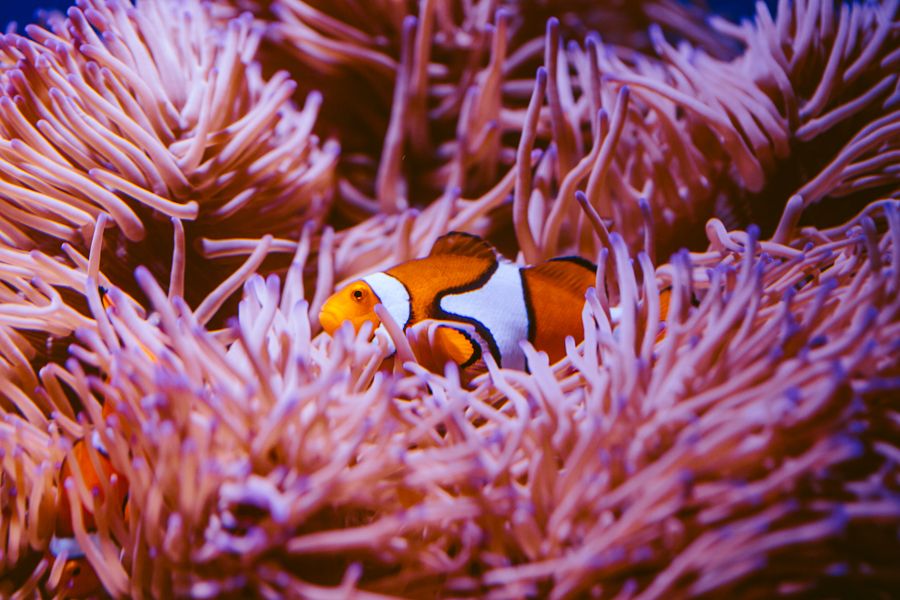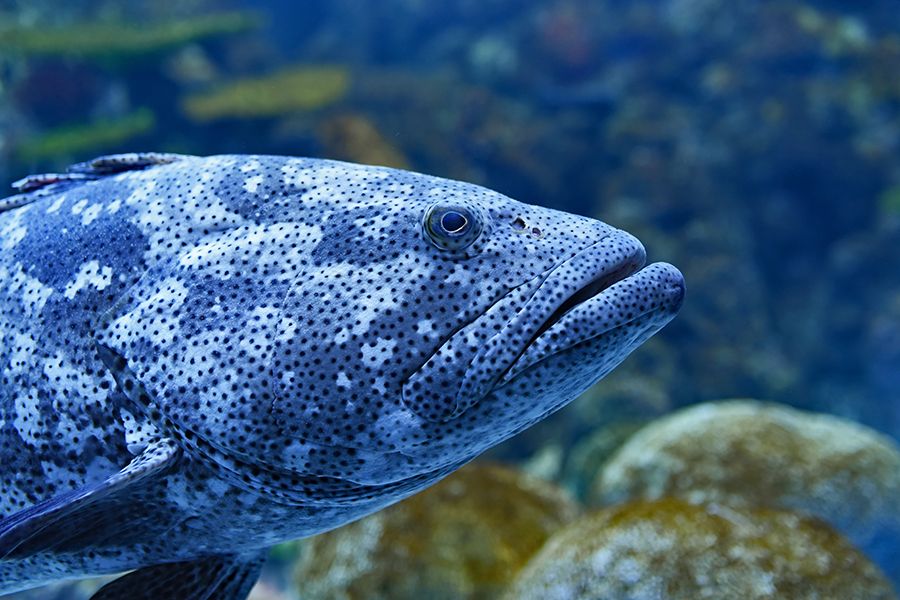Norman Reef
Lying 80km North-East of Cairns, Norman Reef is a renowned snorkel and dive spot on the Outer Great Barrier Reef. Situated North of the larger Hastings Reef and in between Spur, Onyx and Saxon Reef, Norman Reef is the furthest northern reef often visited by tour operators departing from Cairns.

How long does it take to get to Norman Reef?
It can take between 1.5 - 2 hours to reach Norman Reef, depending on which style of boat you travel on. For example, if travelling on a fast boat like Evolution Reef Cruise, it may only take about 1.5 hours. If cruising on a leisurely sailing catamaran such as Passions of Paradise, it can take up to 2 hours to reach the outer reef.
What is the depth of Norman Reef?
The depth variation of Norman Reef can be anywhere between 1 - 20 metres. Depending on the tides and different areas of coral formations, the shallow rocky reef flats can hover between 1-3 metres, ideal for snorkelling on the surface of the ocean. While deeper parts where the reef slopes down may be up to 20 metres, perfect for the advanced scuba divers keen on exploring further. An average depth hovers somewhere around 13 metres. Suitable for introductory divers and those who like to duck dive while snorkelling.

Visit Norman Reef onboard one of these epic boat trips from Cairns!
What type of Reef is Norman Reef?
Norman Reef is considered to be a Planar reef and has seen the formation of new coral growths and sandy lagoons over the centuries. With a large expanse of shallow gardens, Norman Reef is considered to be one of the best underwater photography spots playing host to stunning colours, biodiverse marine life, great visibility and pristine conditions.
Norman reef is home to a selection of caves, swim-throughs, drop-offs and even a small wreck. You'll see Staghorn corals, stunning outcrops and bommies with yellow, orange, purple, pink, blue and multi-coloured hues!

What can I expect to see on Norman Reef?
Due to the biodiversity and health of Norman Reef, many marine creatures are found within this special dive and snorkel site. Jump in and spy brightly coloured nudibranchs, manta rays, moray eels, turtles and an abundance of fish at the bustling section of the World Heritage-listed Great Barrier Reef!
Nudibranchs
Nudibranchs are a favourite sighting amongst divers and quite often spotted at Norman Reef. These little sea slugs aren’t your average mollusc, with an array of bright neon and luminescent colours seen on their gill-like appendages and bodies. While striking, they are relatively small so keep your eyes out for them when diving down to the sandy seafloor.
Sea Turtles
Sea turtles are a common site around Norman Reef. Spot a green turtle swimming gracefully through coral gardens or swim alongside them. Keep an eye out for the critically endangered Hawksbill turtle. Often found in a section of Norman Reef called Turtle Bay, Hawksbill's often use this quiet and lush underwater spot as a sanctuary for resting.

Moray Eels
Moray Eels are occasionally found swimming through the long seagrasses and poking their heads out of coral gardens of Norman Reef. With long, slithery bodies, colourful patterns and impressive jaws, these incredible marine creatures are a natural and wonderful sighting on the reef!
Maori Wrasse
These big blue wonders of the ocean are often seen making their way through and nibbling on the vibrant corals of Norman Reef. Growing up to over 2 metres, these luminescent, shimmering fish are friendly and simply beautiful creatures! Don’t forget to turn your GoPro on as soon as you see one of these majestic swimmers.
Bronze Whalers
The Bronze Whaler, a type of reef shark with a bronze shimmer, is often found around Norman Reef. An astounding, naturally wonderful sight to see during your dive or snorkel, the bronze whaler swims slowly and peacefully along the sandy seafloors. While not usually aggressive, treat all sharks with caution and a respectful distance while snorkelling and diving.
Tropical Fish
The glorious array of colourful corals and anemones in the reef is a paradise for a vast number of tropical fish such as spangled emperors, drummers, fusiliers, clownfish, angel and red bass… just to name a few! Light up your sights while vibrant schools of fish swim around you and your snorkelling buddies in Norman Reef!

Manta rays
Without a doubt, manta rays are one of the most impressive animals you may encounter on the reef. They can reach up to 7m in width and are sometimes spotted cruising around the Great Barrier Reef. A behemoth in size and large in personality, occasionally even breaching the surface of the water! They are related to stingrays, but unlike their cousins, they spend their time in the open water, rather than hiding beneath the sand! Also unlike stingrays, manta rays do not have a barbed tail and are completely harmless to humans.
Cuttlefish
Cuttlefish are a type of cephalopod and are related to squid, octopus and nautiluses. They can change colour and alter their shape to blend in completely with their surroundings, meaning oftentimes, they are hard to spot! However, they can be seen making their way around the reef darting from one shelter to the next - and if you are lucky enough to see one, pay attention to the way it looks as it could change at any moment as it moves around! These masters of disguise are particularly great at camouflage, altering their appearance in just one second.

Groupers
There are several types of groupers found on the Great Barrier Reef and within Norman Reef. Notoriously unafraid of people, they are often known for swimming straight up to their newfound company as snorkellers and divers who explore the reef. This can be scary for some as they can grow to be up to 400kg in some species. But don’t worry - they are harmless to people and make for a great underwater experience!



















